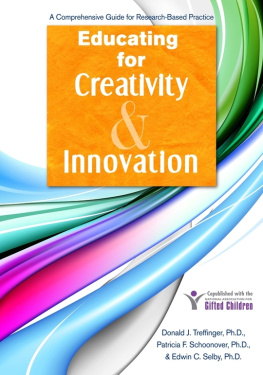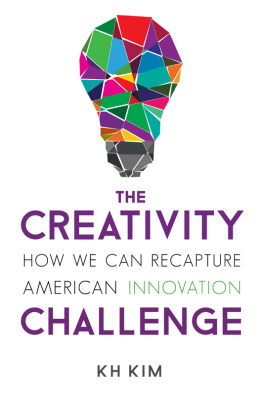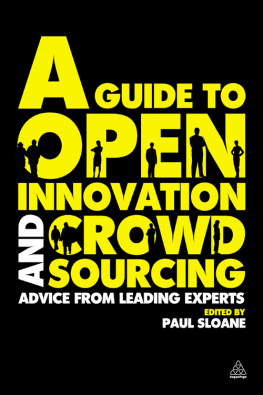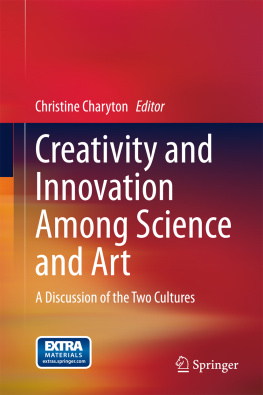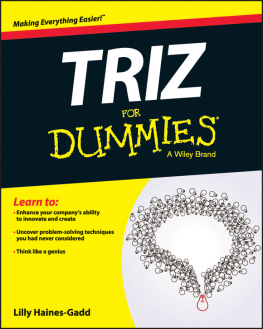About the Authors
Donald J. Treffinger, Ph.D., LL.D., is president of the Center for Creative Learning, Inc., in Sarasota, FL. He has authored or coauthored more than 400 books, monographs, and articles. He served as a faculty member at Purdue University, The University of Kansas, and Buffalo State College. Dr. Treffinger received the National Association for Gifted Childrens Distinguished Service Award, the E. Paul Torrance Creativity Award, and in 2011, the Ann F. Isaacs Founders Award and the Educator of Distinction (Legacy Series) Award. He also received the Risorgimento Award from Destination ImagiNation, Inc. and the International Creativity Award from the World Council for Gifted and Talented Children. Dr. Treffinger also served as editor of Gifted Child Quarterly and Parenting for High Potential.
Patricia F. Schoonover, Ph.D., is an associate of the Center for Creative Learning who works with schools and other organizations. Dr. Schoonover also teaches undergraduate and graduate courses in creativity and creative problem solving at the University of Wisconsin-Stevens Point, where she was the director for Wisconsin Creative Problem Solving Programs. Dr. Schoonover worked for many years in the area of gifted education and talent development, was an elementary gifted education teacher and director of gifted programming, and was a lecturer at the University of Wisconsin-Green Bay. She is the author of several books and articles on creativity and CPS in education.
Edwin C. Selby, Ph.D., is an associate with the Center for Creative Learning and an adjunct professor at Fordham Universitys Graduate School of Education. He is the principal author of VIEW: An Assessment of Problem Solving Style. He offers seminars and workshops to help individuals and groups to become more effective problem solvers. Dr. Selby is also the author of several articles on creativity and individual style. He has been a public school music and drama teacher, founded and directed the Sussex Student Theater, served as president of the Sussex County Teen Arts Festival, and was a member of the Sussex County Technical School Board of Education. He currently serves as president of the Board of Trustees for the Sussex County Charter School for Technology. Dr. Selbys professional interests include learning styles, talent development, and developing creativity and problem solving among students and staff.
Chapter 1
Introduction
T his book is for many different audiences. Its for you, for example, if youre an educational administrator, educational specialist (in any area), classroom teacher (present or future), or community leader who works with other people in any setting. The book primarily focuses on teachers and students, but its really for any readers who want to extend their understanding of their personal creativity and to be able to nurture creativity in others. Even if you already consider yourself quite creative, this book will help you discover some useful tools and resources. On the other hand, even if you dont consider yourself very creative at all, you will discover that you can be creative in satisfying and rewarding ways!
For those of you who work with studentsfrom the primary grades through adult learnersthis book will help you find ways to incorporate creativity into your teaching, as you discover ways to recognize your students creative characteristics and strengths, to nurture their creativity, and to evaluate their creative work. Lets meet three students. Think about ways they may be similar and different in their characteristics and needs and about how adults responded to them. From time to time throughout the chapters that follow, we will revisit these students and several others to explore their stories and to illustrate our understanding of creativity and creativity instruction in our schools.
Eric
Eric was a fifth-grade student in a small K5 school in the Midwestern United States. He seemed to have trouble sitting still for long periods of time, and he could be very trying for the teacher. He seemed compelled to talk to other students even during quiet reading time, and he was prone to getting into mischief. If there was a commotion in class, Eric was often the center of it. When Erics classroom teacher responded to a survey that inquired about the creative potential of the students in her class, she was not able to identify any interest on Erics part that she could use to motivate him to be more productive in class. She had resigned herself to trying to get as much out of Eric as she could by placing him in productive cooperative learning groups and working with him to cut down on his talking and inconsistent work and behavior patterns. She shared this about Eric:
His schoolwork is sporadic. At times he seems distracted, although when he does take part in class discussion, his answers are appropriate and show some thought. When assigned to a group, he will work with the others as long as they are working. He seems unwilling to take the lead in projects, but will carry out his assignment and do his share. Eric is popular with other boys and respectful toward adults. Even when he is being reprimanded, he is quick to acknowledge that he was in the wrong and will sincerely pledge to try to improve his behavior. On open-ended assignments, when he does hand them in, Erics work shows evidence of originality and flexibility at times, but often lacks breadth or depth, and he will elaborate on his answers only after prompting by the teacher. In group assignments requiring creative thinking, he may offer some tentative ideas, but again will not take the lead. Although he will work with others to meet a challenge, he is not motivated to seek out challenges or ambiguous situations. His attempts at trying out new and original ideas are tentative at best, and he seeks teacher validation to make sure his efforts are okay or right.
Erics situation might have continued in much the same way throughout the year, except for the intervention of one of his friends and the willingness on the part of his teacher to broaden her view. The teacher announced her plan to begin a unit on the Civil War and was preparing to give the class an assignment when one of Erics friends raised his hand and exclaimed, Mrs. Lynch, if you want to know about the Civil War, you should ask Eric. He knows all about it! Mrs. Lynch responded, Thats very interesting. Thank you, Jimmy. Eric do you know about the Civil War already?
Eric responded that he did, and he proceeded to summarize the causes of the war as well as some of the battles and leading generals on both sides. Upon further questioning, Mrs. Lynch found that Erics uncle was a Civil War reenactor and had involved Eric in his hobby for more than 2 years. Eric had a passion for all things Civil War and avidly read books about it that he borrowed from his uncle or the town library. He had recently been accepted as a drummer boy in his uncles regiment. Mrs. Lynch was a bit stunned and mystified as a new view of Eric began to form. She had found a hook that she could use to more fully engage him in his schoolwork and channel his energy in positive ways. She also had found a tool to help him work toward expressing his creative potential.
Mrs. Lynchs first step was to invite Eric to put together a set of lessons about the Civil War and Civil War reenactors. She spoke to his parents and uncle to enlist their help. At Erics request, his friend Jimmy also became involved. The project they planned involved research that would lead to a PowerPoint presentation accompanied by activities for their classmates to complete. The teacher taught the entire class to use some tools for thinking and problem solving. For instance, she asked the class to use the Brainstorming with Post-it Notes tool to list the challenges that faced the nation in 1860. The students then created another list of challenges facing the United States today. The lists were compared to see if any of the issues of concern in 1860 were still of concern today. Students then worked in groups to choose one of those issues and develop possible solutions.
Next page
